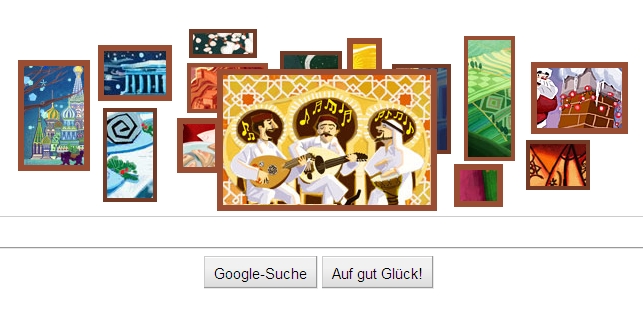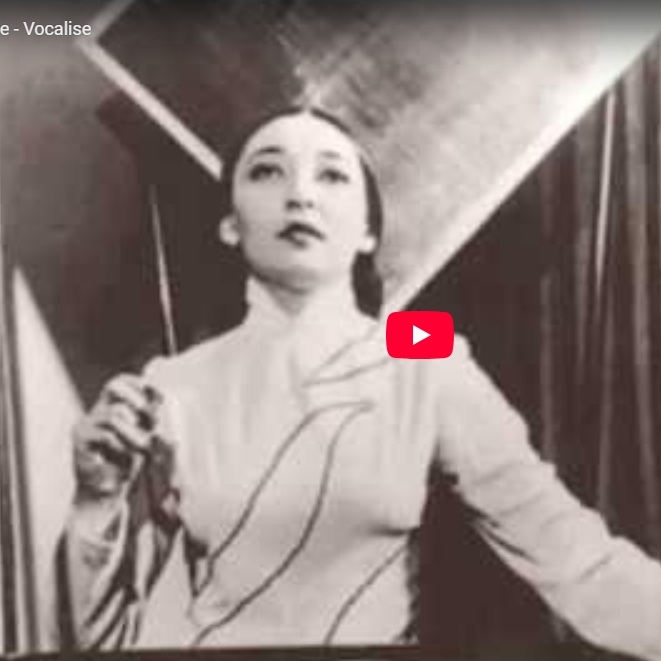Google has included the search for the oud – the Arabian lute – to the Holiday Logo for Christmas 2010.
It’s great that google has added this search for an inmportan plucked instrument that is played all over the Middle East.
Wikipedia about the oud:
The oud (Arabic: عود ʿūd, plural:أعواد, a‘wād; Assyrian:ܥܘܕ ūd, Persian: بربط barbat; Turkish: ud or ut;[1] Greek: ούτι; Armenian: ուդ, Azeri: ud; Hebrew: עוד ud; Somali: cuud or kaban) is a pear-shaped stringed instrument commonly used in North Africa (Chaabi, Andalusian, …) and Middle Eastern music. The modern oud and the European lute both descend from a common ancestor via diverging evolutionary paths. The oud is readily distinguished by its lack of frets and smaller neck.
Those are the special features of the oud (shortened from Wikipedia):
- Lack of frets: The oud, unlike many other plucked stringed instruments, does not have a fretted neck. This allows the player to be more expressive by using slides and vibrato. It also makes it possible to play the microtones of the Arabic Maqam System.
- Strings: With some exceptions, the modern oud has eleven strings. Ten of these strings are paired together in courses of two. The eleventh, lowest string remains single.
- Pegbox: The pegbox of the oud is bent back at a 45-90° angle from the neck of the instrument. This provides the necessary tension that prevents the pegs from slipping. The tension of the strings helps to hold what would otherwise be a weak joint together. The design is elegant and evolved before the design was written down. The nut is held in place by the string tension, rather than being glued.
- Body: The oud’s body has a staved, bowl-like back resembling the outside of half a watermelon, unlike the flat back of a guitar. This bowl allows the oud to resonate and have a particular tone quality. The shape is structurally very strong and stable enabling it to be very thin.
- Sound-holes: The oud generally has one to three sound-holes, which may be either oval or circular, and often are decorated with a carved bone or wooden rosette.
You can find detailed information about the oud in the Atlas of Plucked Instruments: http://www.atlasofpluckedinstruments.com/middle_east.htm
Google Holiday Logo Christmas 2010 with the Oud

With this search you can find many interesting pages about the oud: http://www.google.de/#q=Oud&ct=holiday10-hp&oi=ddle&hl=de&fp=3cadb483bc8f8289
Some time ago I have found the interesting homepage of Mahmoud Turkmeni, an oud player, guitarist and composer who lives in Switzerland.
Mahmoud Turkmani – Oud Player, Guitarist, Composer
As a composer Mahmoud Turkmani has added new elements to the traditional playing style of the oud. He uses the oud in his compositions which are enriched by multimedia elements as can be seen in the second video of a performance of his composition Ya Sharr Mout.
Biography (shortened from Mahmoud Turkmani homepage)
The innovative guitarist, composer an oud player Mahmoud Turkmani is considered as a renovator and bridge-builder between contemporary Western-classical and Arabic-traditional music. Mahmoud Turkmani who was born in 1964 in Northern Lebanon studied from 1984 to 1989 classical guitar and composition at the Moscow Academy for Music. After his graduation he continued his studies at Oscar Ghiglia (1989/90, Conservatory of Basle, Switzerland), Juan Carmona (1991/92, Flamenco Programme, Andalucia) und Stephan Schmidt (1994-97, Conservatory of Berne, Switzerland). Stephan Schmidt encouraged him to develop his own musical language. It took Mahmoud Turkmani several years to devise his own musical world which, based on his own multicultural background, found its unique form and expressiveness.
Since 1994 Mahmoud Turkmani has composed works for well-known artists and ensembles such as Keyvan Chemirani, Barry Guy, Patricia Kopatchinskaya, Conrad Steinmann, Matthias Ziegler, the Trio Aspekte, the Erato String Quartet, the Eos Guitar Quartet, the Berne Symphony Orchestra and the Cairo Symphony Orchestra. In the multimedial project “Ya Sharr Mout” Mahmoud Turkmani experiments with video, word and sound. Currently, he is working on a composition about the book “Liliths Return” by the Lebanese writer Joumana Haddad.
This is a solo piece by Mahmoud Turkmani in which you can see the oud and the playing technique very well:
Mahmoud Turkmani- Soudfa / صدفة
Ya Sharr Mout – Live in Beirut
“Ya Sharr Mout” is an audio-visual performance by composer and musician Mahmoud Turkmani (http://www.mahmoudturkmani.com ) and VJ Rhaps (Michael Spahr, http://rhaps.com ) with texts by Nadia Tuéni. This film shows parts of the opening concert in Beirut, Lebanon, in October 2007. (Footage by www.dschointventschr.ch)
Mohamed Abozekry
Another interesting player of the oud is the young Mohamed Abozekry. He is listed in the Guinnes Book of Records as the youngest professor for the oud!
from http://sosmusicfestival.com/?q=Mohamed_Abozekry
Oudiste talented and precocious, Mohamed Abozekry begins in 2004 followed the teachings of famous Iraqi musician Naseer Shamma in the Beit el Oud (Arabic Lute House) in Cairo. In 2007, he obtained the diploma of soloist and Professor with the Award of Excellence. Then aged 15 years, he became the youngest professor of the Arab oud.
mohamed abozekry (moga): wave
More Information
Homepage Mahmoud Turkmani with information and many videos: http://www.mahmoudturkmani.com/
youtube channel of Mahmoud Turkmani : http://www.youtube.com/user/mturkmani
Link collection about the oud: http://pinboard.in/u:mandoisland/t:oud/
Find more youtube videos of Mohammed Abozekry: http://www.youtube.com/results?search_query=Mohammed+Abozekry&aq=f

